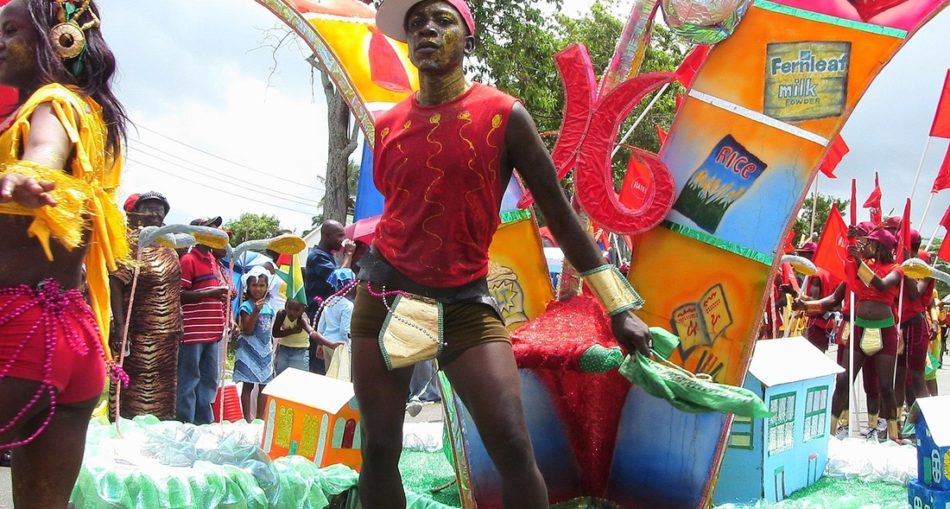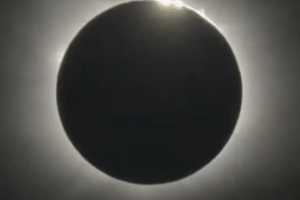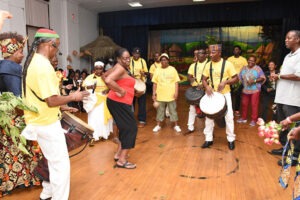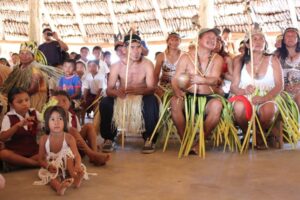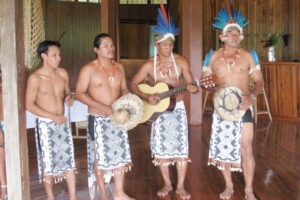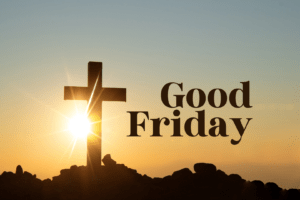Guyana is a co-operative Republic, meaning the country is not governed by a monarch but instead by a government body. While Guyana gained independence on May 26th, 1966, it became a co-operative Republic on Feb 23rd, 1970. This is a significant event in Guyana’s history, and to commemorate it, there are a host of celebrations and activities yearly. On that day, there is a huge parade usually along Home Stretch Avenue, Vlissingen road, and Carifesta avenue. It’s a popular Guyanese pass time to go out on the streets and watch the parades of large floats and costumes handcrafted by local artists. There are lots of food to enjoy as well as festive local music to enjoy. To many Guyanese, there is a word that is synonymous with Republic Day, Mashramani. The first Mashrami celebration was held in Linden and it was well-received and its tradition rolled on from there through the other fifty years.
Interesting Tip
- Many Guyanese simply call the holiday Mashramani, a word which here means “celebration after hard work“.
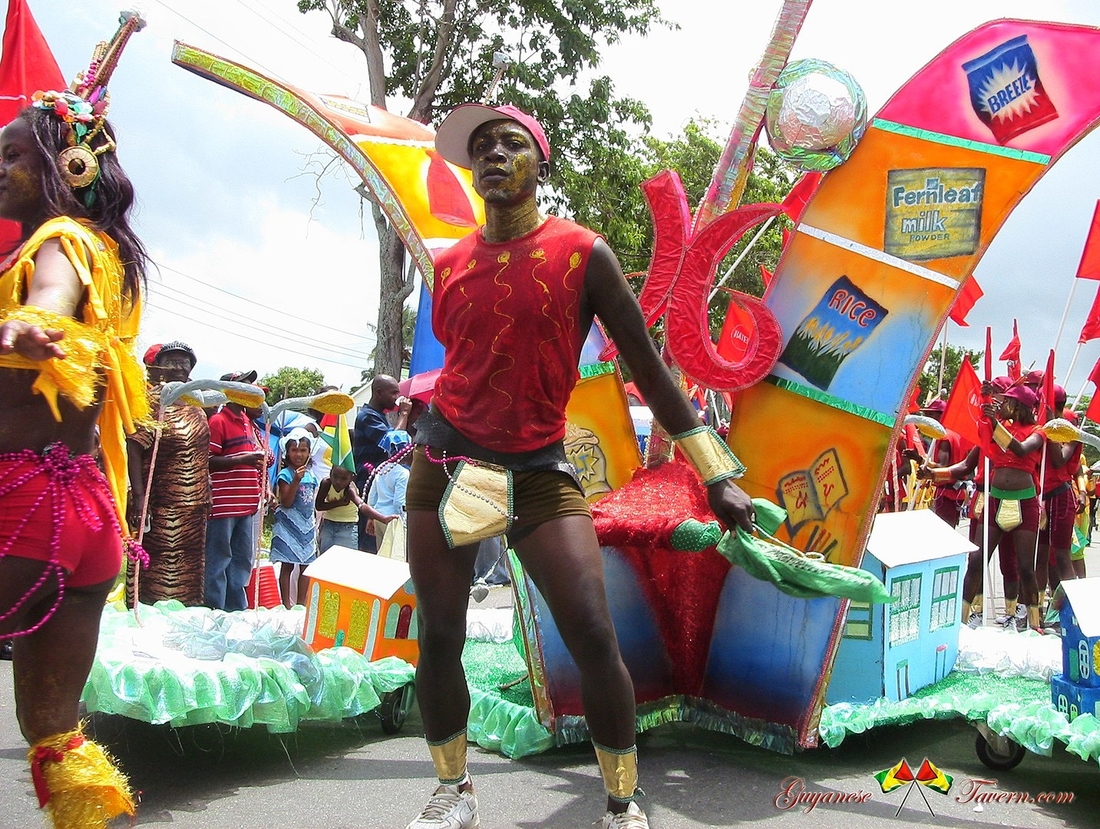
Republic Day in Guyana – By King sheik at English Wikipedia – Transferred from en.wikipedia to Commons by Igitur using CommonsHelper., Public Domain, https://commons.wikimedia.org/w/index.php?curid=952
About Guyana’s Republic Day
The first Republic Day was on Feb 23rd, 1970. On this day, Guyana was declared a co-operative republic and all ties were cut to our British sovereigns. The Governor-General was replaced by the Head of State or the President.
Mashramani was first celebrated in Linden, it was organized by the group called the Jaycees Jubilee Committee, this was done to commemorate Guyana becoming a Republic. It was done and executed so successfully that it was approved to be held every year all across Guyana but the main celebration was been moved to the capital city of Georgetown. Mashramani celebration is symbolic of Republic Day and its festive activities featuring cultural performance and arts make it a local tradition and the essence of what Republic Day is about today.
There were a lot of people who were notable in the first celebration, however, Jim Blackman, Hernan Nobriga and Jimmy Hamilton were momentous for their contributions for bringing the carnival-like feel to Republic Day. There was a group that was formed called the Jaycees Jubilee Committee which consisted of a talented and resourceful team that would create a huge celebration to commemorate our country becoming the Cooperative Republic of Guyana. Though the activities that were being planned were similar to that of the carnival activities across the Caribbean, the committee didn’t want the activities to have the name “carnival”, they wanted it to be unique to Guyana. Eventually, the name Mashramani was decided. Masharami is the Amerindian word for “ celebration after hard work”. The deciding of the name was not an easy feat, as no one had ever spelt it out before and even to the oldest Amerindian heard of the word but never knew to spell the word. Jimmy Hamilton, the Jaycees Chairman, made a guess on the spelling, and to this date, it has remained the same. Due to the huge success, it was concluded that Mashramani will be the official celebration of Republic Day by the then present Forbes Burham.
Symbols and Activities of Republic Day
To commemorate Guyana becoming a cooperate republic some symbolic activities were conducted. To fully understand the significance of these, we would explore them individually. The following were done to immortalize Guyana as being a Republic, there are listed in here in no particular order; First Mashrami Celebration, Official President, Avenue of the Republic, Cuffy Dollar, The Mace. On Republic Day in Guyana, Guyana looks like a carnival city all across the city of Georgetown. The government buildings are repainted and decorated as well as the entire city area. The decorations are also done across all ten administrative regions in Guyana.
Official President
After Guyana became a Republic Arthur Chung was elected to be Guyana’s First President and he would serve as President of Guyana for ten years. This move to place him as president will always be remembered to signify that indeed Guyana had become the Cooperative Republic just four years after its independence in 1966.
Avenue of the Republic
Formerly know as High street, now Avenue of the Republic, this street was renamed to show significance to Guyana becoming the Cooperative Republic. The revealing of the sign for the Avenue of the Republic was done by Lord Mayor John Ford.
Cuffy Dollar
The Cuffy One (1) dollar was issued in 1970 to pay homage to the Berbice Slave Rolt and to commemorate Guyana become the Cooperative Republic. It is the first commemorative one dollar coin better known as the Cuffy Dollar.
The Mace
The mace is an important emblem used in parliament across commonwealth countries. The day that Guyana became the Cooperative Republic there was a significant change that occurred to honour the transition. The head of the mace previously had reflected the British coat of arms however it was changed to reflect the Guyana Coat of Arms. This may not have been a great deal to some but in terms of history and culture, it was a historical change.
About Republic Day In Guyana
The national holiday is an important day in history marking the day Guyana became a Republic. Along with a change of head of state to the President, we also received commemorations like the Mace, Cuffy Dollar, and the naming of the Avenue of the Republic. Republic Day or Mashramani and its celebrations in Guyana have always been a calendar event for the past fifty (50) years and will no doubt continue to be the same.
Article References
- https://exploreguyana.org/event/mashramani-2/
- https://guyanachronicle.com/2020/02/23/avenue-of-the-republic/
- http://parliament.gov.gy/hansard/P30/P80
- https://www.allnumis.com/coins-catalog/guyana/republic-1966-1990/1-dollar-1970-4018
- https://www.kaieteurnewsonline.com/2008/06/24/guyana%E2%80%99s-first-president-dies-at-90/
- https://www.stabroeknews.com/2011/02/17/news/guyana/guyana%E2%80%99s-first-mashramani/
- https://en.wikipedia.org/wiki/History_of_Guyana#:~:text=After%20the%201968%20elections%2C%20Burnham’s,would%20lead%20Guyana%20to%20socialism.&text=On%20February%2023%2C%201970%2C%20Guyana,state%20by%20a%20ceremonial%20president.

